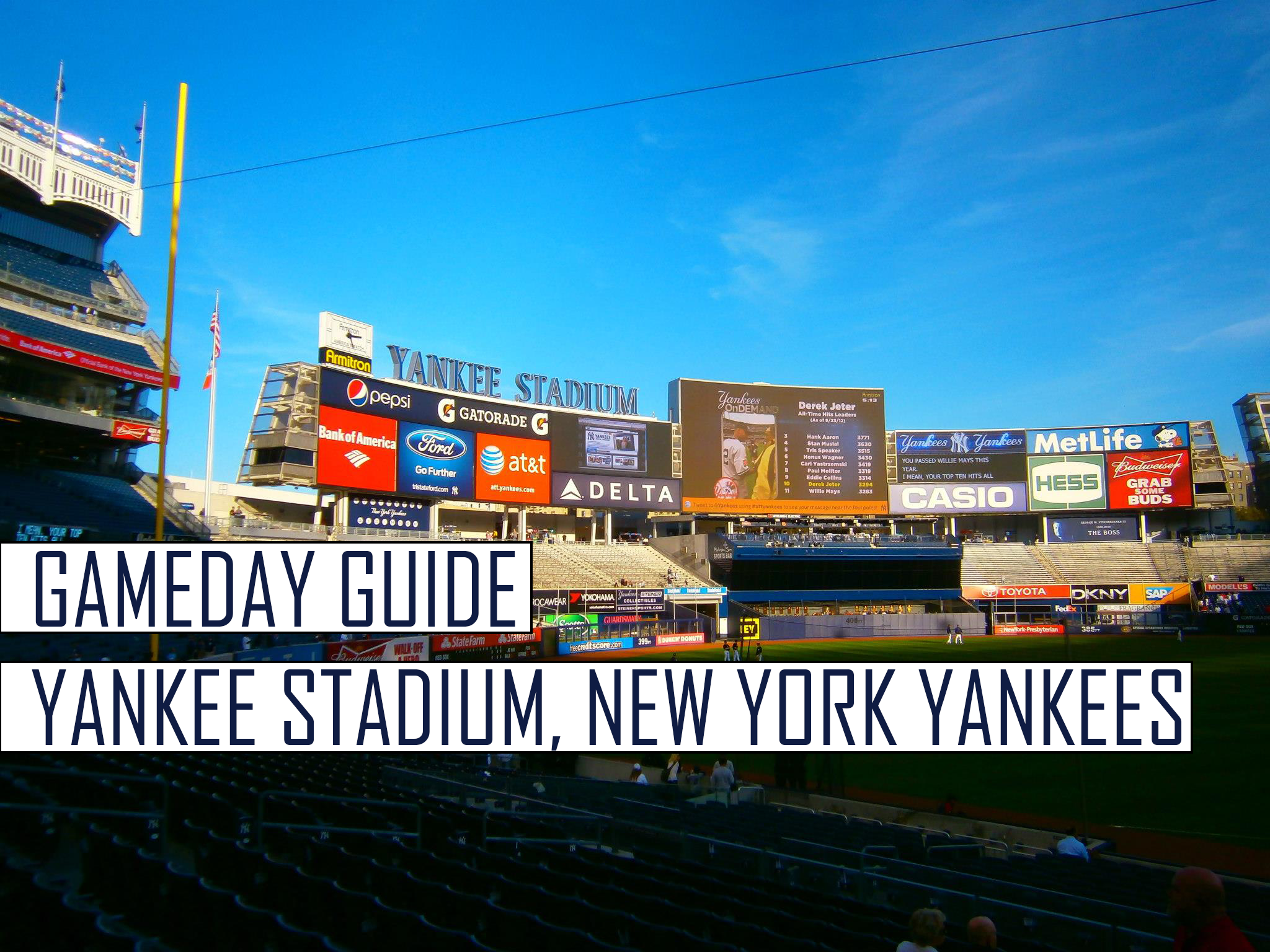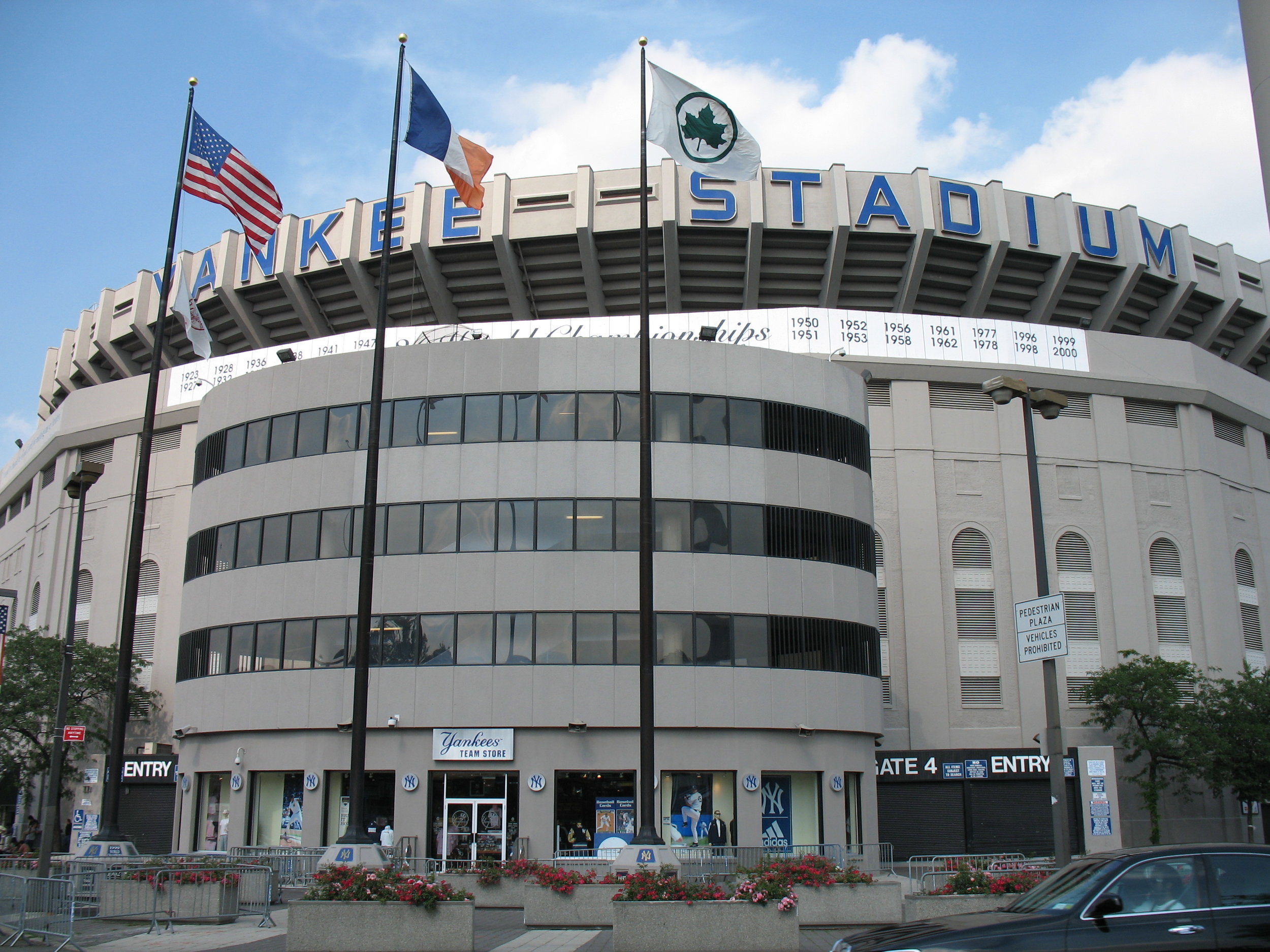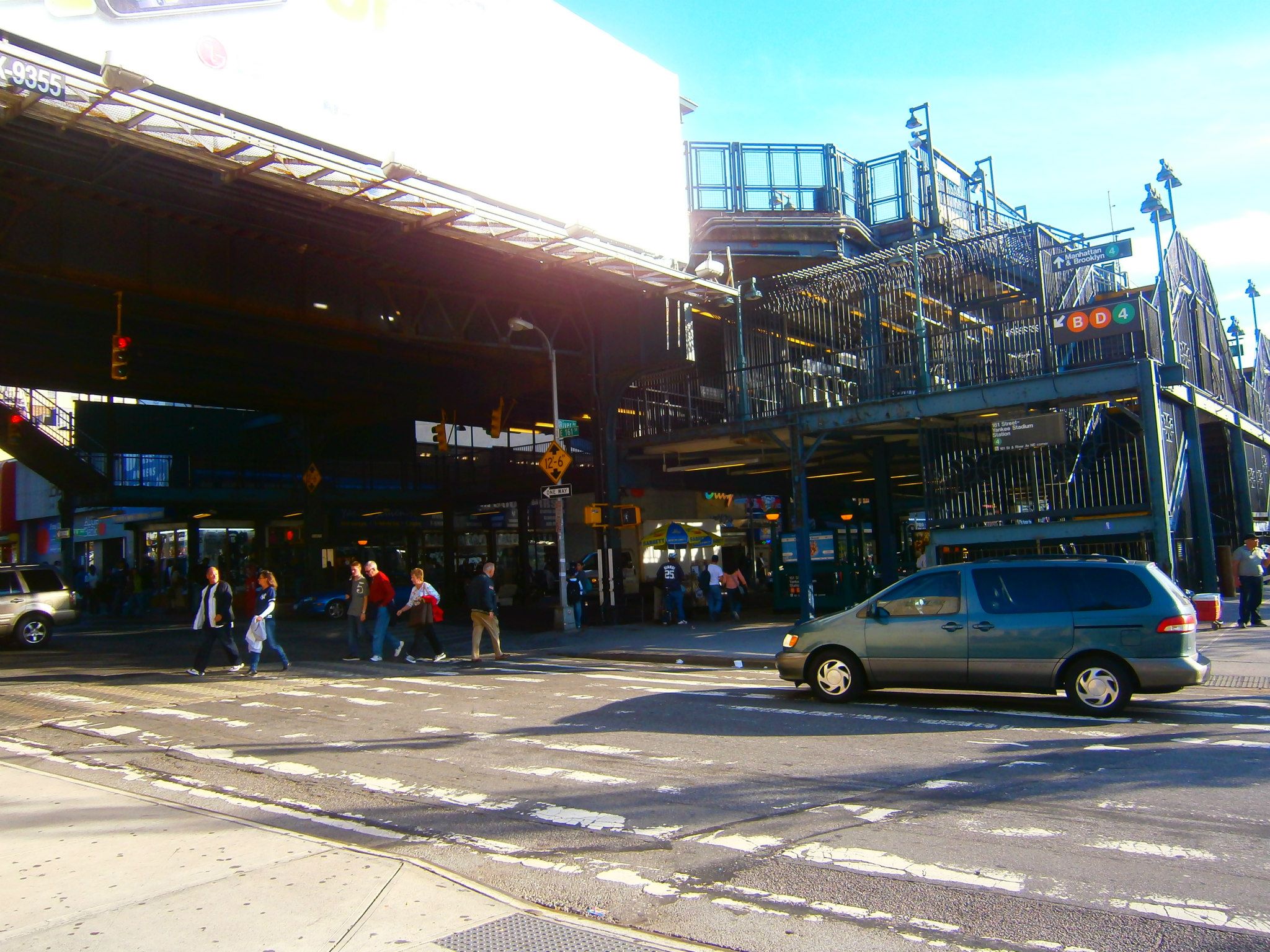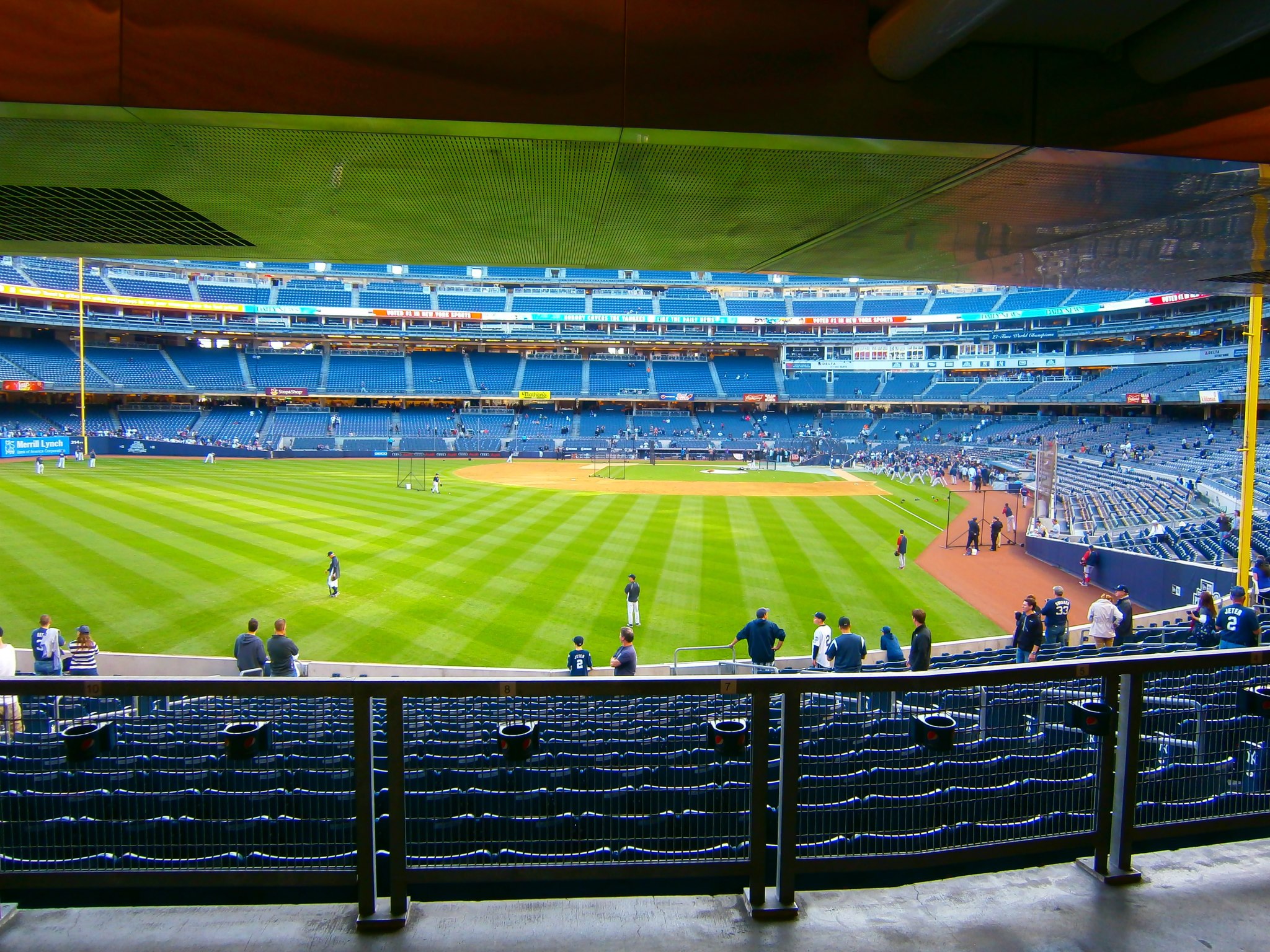Gameday Guide: Yankee Stadium, New York Yankees
/Yankee Stadium
Opened: 1983 | Tenant(s): New York Yankees, New York City FC | Capacity: 54,251
New York Yankees Official Site | Contact
History
The original Yankee Stadium post-renovation in 2006. Image credit: Kjetil Ree/Creative Commons
Yankee Stadium’s history is relatively short. But, then again, it isn’t the first incarnation of this fantastic sporting arena. The original Yankee Stadium was constructed in 1923 as a purpose-built venue for the New York Yankees who had spent the previous 10 years sharing the Polo Grounds in upper Manhattan with the New York Giants.
Relations between the two teams were rocky and in 1920 the Yankees acquired star slugger Babe Ruth, who was a catalyst in helping the Yankees outdraw the Giants. The Giants harboured resentment towards the Yankees and unsuccessfully issued an eviction notice to the team. Following the conclusion of the 1921 season, where the Giants beat the Yankees to win the World Series in a best-of-nine finale, taking place exclusively at the Polo Grounds, Giants owner Charles Stoneham insisted that the Yankees find another place to play their home games.
Many doubted the Yankees’ ability to thrive in a city already dominated by the Giants and Brooklyn Dodgers, but their owners decided to go ahead and build their own stadium, eventually settling on a 10-acre lumberyard in the Bronx as the site for their new ground. At a cost of $2.5 million, Yankee Stadium took less than a year to build and opened its doors to the public in 1923. Success was instant, and the team won their first World Series in the stadium’s inaugural year.
The ground stood for 87 years and in August 2006 construction began on a new ballpark across the street in Macombs Dam Park. The Yankees played their final regular season at the original Yankee Stadium in 2008 before it was demolished two years later.
The new Yankee Stadium opened for the 2009 season, retaining many of its predecessor’s charms while adding a whole host of new and exciting amenities. Once again, a maiden campaign was met with success, as the Yankees clinched the 2009 World Series crown.
Since 2009, Yankee Stadium has hosted a variety of events including concerts, two Stadium Series NHL ice hockey games in 2014, college football and, from 2015, is also home to New York City FC of the MLS.
Who are the New York Yankees?
The New Yankee Stadium in 2010. Image credit: Matt Boulton/Creative Commons
The New York Yankees are the most successful North American sports franchise in the ‘Big Four’ – a grouping comprised of baseball, basketball, American football and ice hockey. With 27 World Series titles and 40 American League Pennants, they are well ahead of the pack in MLB when it comes to championships.
The team originally participated in the AL as the Baltimore Orioles from their formation in 1901 until 1902, when the team was moved to New York as the Highlanders. That nickname would stick for 12 years following a change of stadium from Hilltop Park in Upper Manhattan to the Polo Grounds on the Harlem River. From 1913 the team was formally known as the Yankees and at the end of the decade they made one of the most significant transactions in baseball history by signing Babe Ruth from rival team the Boston Red Sox for cash considerations.
Ruth helped propel the Yankees to stardom by winning the 1923 World Series – the club’s first - before playing an integral role in a further three triumphs alongside another Yankee legend in Lou Gehrig Jr. Meanwhile, the Red Sox would not taste such glory until 2004, when they ended an 86-year drought attributed to the sale of Ruth which was coined the “Curse of the Bambino.”
The Yankees continued in their success following the Ruth era, with greats such as Joe DiMaggio, Yogi Berra, Roger Maris and Mickey Mantle all contributing to several more championships.
Following the sale of a majority shareholding in the organisation in 1965, the Yankees suffered their first losing season in 40 years and only their second in 47, and they wouldn’t be back in the big time until the late 1970s under the stewardship of George Steinbrenner. Steinbrenner went on to be one of the most influential and controversial figures in franchise history, known for introducing a grooming policy and often interfering in management decisions.
The ‘90s, however, saw renewed hope for a franchise that has been suffering for almost 20 years. The Yankees’ resurgence was largely helped by the ‘Core Four,’ the collective name given to shortstop Derek Jeter, pitcher Andy Pettitte, catcher Jorge Posada and closer Mariano Rivera who were either homegrown players or signed as amateurs by the team. They were the heart of a roster that dominated for five years, winning four World Series in that span.
The Yankees hosted the 2008 All-Star game in the last season of their original Bronx venue, before the new Yankee Stadium opened to another championship season in 2009.
Getting to New York
New York City is served directly by three airports – John F Kennedy International and La Guardia which are both in Queens, and Newark Liberty across the water in New Jersey. Most international travellers will arrive through JFK or Newark, which have great connections to Europe.
All of the airports are well connected by public transport, while taxis are readily available from arrivals, but are also a more expensive option. To find out how you can save by travelling from the airport to the city, check out this guide.
Norwegian have recently started operating flights from western Europe to Stewart International Airport, which is in New York state but is approximately 90 minutes north of Manhattan. The cheapest option to get from the airport to the city is by using the Stewart Airport Express.
If you’re travelling domestically or from Canada, then New York is well-served by rail, and the city’s two major stations Grand Central, on the east side, and Penn Station, on the west, have routes going out of the city and out of state.
Getting to Yankee Stadium
The Subway station outside Yankee Stadium.
The cheapest and most convenient way to get to Yankee Stadium is by using underground rail network the New York Subway. The Yankee Stadium Subway stop is located on East 161st Street and River Avenue and is served by trains 4, B and D. Trains are frequent and a journey from Manhattan takes approximately 25 minutes and a MetroCard can be purchased on the day.
The Bx6 and Bx13 buses also stop at 161st Street and River Avenue, but aren’t as quick and reliable as the trains.
Tours and merchandise
Fans and tourist can take a tour of Yankee Stadium and learn all about the history and tradition behind the New York Yankees. You can take a look at some of the amazing baseball artefacts on offer, visit Monument Park – the team’s open-air museum containing a collection of monuments, plaques and retired numbers – as well as tour some of the stadium’s exclusive locations including boxes and the players’ dressing rooms.
Tours typically run every day of the week and the club currently operate nine-time slots. Tours run through the offseason and pre-game tours take place on gameday. The tour entrance is located to the left of Gate 6, and guests are asked to arrive at least 15 minutes before the start of the tour. Tickets start at $20 and discounts are available for online booking via Ticketmaster.
Yankees merchandise is readily available throughout New York City and the United States. There are two official team stores in the Bronx including one at the stadium, one at Lake Grove in Queens and five in Manhattan.
Other sports shops sell official Yankees merchandise throughout the city, while MLB Shop is the go-to online portal for Yankees gear.
Matchday experience
Bald Vinny of the Bleacher Creatures - the New York Yankees' famous supporters group.
Baseball is probably one of the best spectator events for non-sports fans, as the relaxed atmosphere and pace of the game and emphasis on amenities almost make it more of a social event.
As soon as you get off the train or bus Yankee Stadium is unmissable, and there will probably be a vast amount of people hoarding round street vendors either buying food, which is cheaper than what can be found inside the stadium, or snapping up some gameday merchandise.
Yankee Stadium is a palace, and just admiring the architecture, decoration and overt celebration of the team’s history is an attraction itself.
If you’re lucky to go on a giveaway day, then you could be presented with memorabilia such as a free cap, calendar or bobblehead before the game, while certain sponsors hold postgame deals if certain in-game criteria are met, such as 50% off at a restaurant if the Yankees score three or more home runs.
For those who are hungry, Yankee Stadium has a ridiculous amount of food options. In addition to its own Hard Rock Café, there are food stalls and vendors located all throughout the venue offering various cuisines to suit all tastes and dietary requirements, a full list of which can be found here. During the game, stadium workers walk up and down the aisles selling refreshments and snacks which can be purchased from the comfort of your own seat.
The Yankees' grounds crew dancing to YMCA by Village People during the seventh-inning stretch. Image credit: KOknockout920/Wikimedia Commons
The Yankees take up baseball traditions including the seventh-inning stretch, where fans generally stand up and stretch out their arms and legs and sometimes even walk around, while renditions of popular anthem “Take Me Out to the Ball Game” and “God Bless America” play out to the stadium. It is also a popular time for fans to get beverages and food and marks the last opportunity to purchase alcohol on the day.
Don’t forget to turn up early enough to see the ceremonial first pitch – a longstanding ritual of baseball in which a guest of honour throws a ball to a player of the home team to mark the end of pregame festivities, thus signifying the start of the game. Gates open one-and-a-half hours prior to game time from Monday to Friday, while visitors are allowed in two hours prior to the first pitch on weekends and special event days.
Tickets
Tickets for all Yankees home games can be purchased from the ticketing hub at Yankees.com, which is powered by Ticketmaster. Although they aren’t an official ticketing partner, StubHub are also a good option for resale tickets.
Tickets in the bleacher seats are reasonably priced, while seats behind home plate can range from a few hundred, well into the thousands. Midweek tend to be less expensive than those at the weekend. The New York Yankees regularly run deals throughout the year where you can grab a great deal, so keep your eyes peeled for a bargain.
Safety
Historically, the Bronx has been an NYC borough known for high levels of crime. More recently it has been improving, and the area around the stadium is perfectly safe. There is always a large police presence on gamedays, and many families with young children go to watch the Yankees without incident.
Prior to entering the stadium, guests will be subject to routine security checks which include metal detector screenings, the emptying of pockets and bag searches. Once security has been cleared, tickets will then be scanned, and entry permitted.
Following a string of incidents, most recently when a young girl who was sat being the third-base dugout was hit in the face on a line drive, Yankee Stadium will be installing extended protective netting parallel to the foul lines for the 2018 season in order to keep visitors safe.




























Here's the information you need to know if you plan on watching Wisla Krakow at Stadion Miejski.